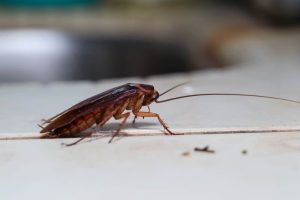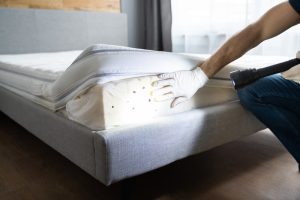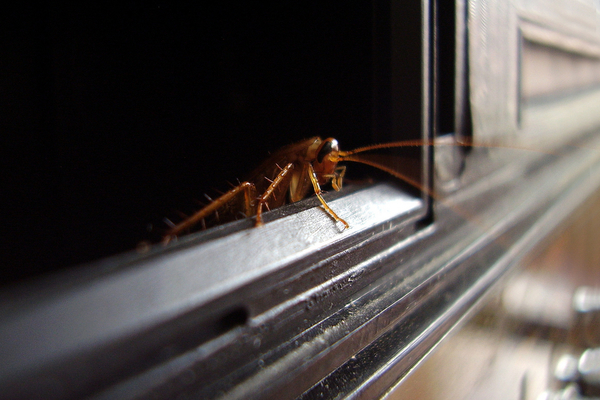Hiding Places for Pests


Are you tired of playing hide and-seek with unwanted guests in your home? These obnoxious animals are an inconvenience and may harm your home and health. Identifying their hiding spots is the key to successfully evicting them from your living space.
We will unveil the 10 surprising places where pests like to hide below, as these sneaky invaders can be found in unexpected locations. But don’t fret! We’ll also share some essential signs to look out for that could indicate an infestation and provide you with effective prevention and treatment options to keep your home pest-free. Let’s get ready to outsmart these unwanted housemates once and for all!
Unexpected Hiding Spots for Common Household Pests
-
Inside houseplants
– Houseplants are a popular way to bring nature indoors, but they can also attract insects, rodents and other creatures. Pests such as spider mites, mealybugs, and fungus gnats can readily enter the soil and roots of your plants, causing harm or spreading to other areas of your home.
-
In cardboard boxes
– Cardboard boxes are a common storage solution, but they can also be a favourite hiding spot for pests like cockroaches and silverfish. These insects are attracted to the starch in the glue used to make the boxes, and they can easily lay their eggs or feed on the contents of the boxes.
-
In wall voids
– Wall voids are spaces between walls, often left empty during construction. These voids can provide pests like rodents and insects with a safe and secluded hiding spot, making it difficult to detect an infestation until it has become a serious problem.
-
In electronics
– Pests like cockroaches are attracted to the warmth and darkness of electronics. They can easily crawl into your TV, computer, or other electronic devices and cause damage to the internal components. Furthermore, pests in electronics can also pose a fire hazard.
-
In cluttered areas
– Cluttered areas like closets, basements, and attics can provide pests with hiding spots and make it difficult to identify an infestation. Pests can hide in piles of clothes, boxes, or other clutter, making locating and eliminating them challenging.
-
In pet food and water bowls
– Pet food and water bowls are a source of food for pests like ants and cockroaches. These pests are attracted to the moisture and leftover food in the bowls and can easily infest your pet’s feeding area.
-
In appliances
– Appliances like stoves, refrigerators, and dishwashers provide pests with warmth and food crumbs. These spots can be harder to clean and provide a perfect breeding ground for bugs.
-
In insulation
– Insulation can provide rodents with a cozy home. They can easily chew through insulation and enter your home, potentially causing damage or spreading disease.
-
In the laundry area
– Pests like silverfish and cockroaches are attracted to the moisture and warmth in laundry rooms. They can easily hide in piles of clothes or the machines themselves.
-
Inside air ducts
– Air ducts can become home to pests like rodents and insects. They can cause damage to the ducts and spread disease throughout your home.
Signs of Pest Infestations
Identifying signs of a pest infestation is crucial to eliminate them from your home. Signs of pest infestations include:
- Droppings – Pest droppings indicate that pests have invaded your home. You can find droppings near food sources or in hiding spots, such as wall voids or corners of a room.
- Chew marks – Look for chew marks on food packaging or furniture, indicating a rodent infestation. These pests have strong teeth and can chew through almost anything, including electrical wires, causing a safety hazard.
- Foul odours – Foul odours like urine or feces are another sign of a pest infestation. Pests like rodents and cockroaches can create a strong smell in areas they infest.
- Nesting materials – Pests like rodents collect nesting materials like paper, fabric, or dried leaves to build their nests. If you detect these things in unusual areas, it might indicate an infestation.
It’s important to take these signs seriously and act quickly to eliminate the pests from your home. Professional pest control experts can provide effective solutions to keep your home pest-free.
Treatment for Pest Infestations
- Home remedies – People use many home remedies to repel pests, such as peppermint oil, vinegar, and baking soda. While these remedies may not be as effective as those from a professional pest control company, they can be a good option for mild infestations or preventative measures.
- Traps – Traps can effectively catch and remove rodents, insects, and other pests. There are a variety of traps available on the market, including snap traps, glue traps, and live traps.
- Pesticides – Pesticides can kill or repel pests, but it’s important to use them safely and according to the manufacturer’s instructions. Some pesticides can harm humans and pets, so taking precautions is important.
Prevention of Pest Infestations


Preventing a pest infestation is easier than treating one. Prevention tips include:
- Seal entry points – Seal cracks and gaps in your home to prevent pests from entering.
- Keep your home clean – Clean your home regularly and avoid cluttered areas.
- Store food properly – Store food in sealed containers and clean up any spills or crumbs.
- Regularly check your plants – Check your houseplants for signs of pests and remove any infested plants.
- Maintain your garden – Keep your yard free from debris and trim bushes and trees.
Say Goodbye to Unwanted Pests With Accend Solutions
Note that even if you take all the necessary precautions, pests can still find a way into your home. That’s where Accend Solutions comes in. Our team of experienced professionals can help identify and eliminate any pest infestation in your home or business.
Don’t let these buggers take over your space — contact us today at 068 474 7303, 083 357 5509, to schedule your appointment and get the peace of mind you deserve. We’re always here, ready to help you with all your pest control needs, including pest control in Randburg, Roodepoort and pest removal in Johannesburg

